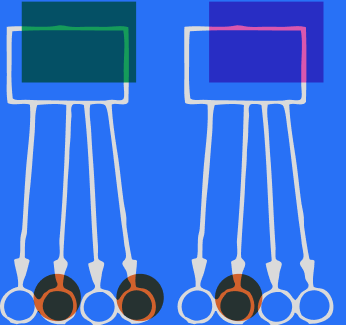- PLATFORMKepler PlatformAI TECHNOLOGIES
- WHY KEPLERUSE CASESBY ROLE
- PARTNERS
- INSIGHTSInsights
- COMPANY
Machine Learning is a subset of Artificial Intelligence that allows software applications to learn to predict outcomes, using past data, without being explicitly programmed to do so.
Machine Learning will surface trends and patterns from the data that humans would miss, helping people make better use of their data to make smarter decisions.
ML can take the guesswork out of decision-making. When it comes to business, data-driven decisions can make the difference between keeping up with the competition or falling behind.
ML helps people find meaningful insight from ever-growing volumes and varieties of data.
Spreadsheets and databases can show you a snapshot in time, which you can analyze to come up with your own conclusions. ML, however, is able to discover relationships in data that are highly complex and difficult for humans to find.
ML allows companies to transform processes that were previously only possible for humans to perform on a small scale – a job can be done faster, at scale, and with no human error due to repetition fatigue.
ML can surface trends and patterns that humans would miss and can help any business make smarter decisions – like identifying opportunities or avoiding unnecessary risks. With ML, a business can be more adaptable, agile, and profitable.
ML works by processing and analyzing datasets. The data can be text, numbers, photos, or a combination. The more training data you provide, the faster and better the ML model can learn and improve.
There are four types of ML algorithms:
Supervised: the algorithm learns from training data that is labeled (includes inputs paired with correct outputs) and it searches for patterns that correlate with the desired outputs
Unsupervised: the algorithm interprets unlabeled data, without human instruction, and is left to organize that data in some way to describe its structure
Semi-supervised: a blend of supervised and unsupervised, the algorithm is trained on a small amount of labeled data and a large amount of unlabelled data
Reinforcement learning: the algorithm is trained to make a sequence of decisions with cues provided by human operators, and it gets rewards or penalties for its actions with the goal of maximizing the total reward
A foundation of high-quality training (sample) data is critical to successful and robust ML models. Kepler takes care of some of the essential data cleaning, pre-processing, and feature engineering – which means you have an improved ML training model that results in better performance with greater accuracy.
Depending on the task, Kepler uses supervised, unsupervised, or semi-supervised learning strategies, and the user doesn’t need to worry about these details. Kepler includes a variety of ML algorithms – from the most classic ones like logistic regression or k-means – to different deep learning architectures that can build solutions for a wide range of problems.
Kepler comes equipped with strong AutoML capabilities using Bayesian Optimization algorithms. Not only does Kepler select the right algorithms for your problem – but it also optimizes the hyperparameters (parameters whose values are decided beforehand that affect the quality and speed of model training) to ensure maximum performance – freeing human experts from a tedious hyperparameter tuning process and saving time and money.


A manufacturer and distributor in the fashion industry wants to optimize its inventory management strategy, and a critical piece of information is to predict the estimated demand per SKU at different time scales. Being able to predict inventory one year in advance would help the operations manager plan warehouse capacity. The store manager would equally benefit from daily inventory forecasting three weeks in advance for replenishing or replacing stock. Kepler can perform predictions at different horizons, taking into consideration transactional data, products, store information, and external data like weather, holidays, or even social media information.




AI primer on key data science terms and processes
Applied AI training on how to run a successful AI project
AI roadmap advice
How to pilot AI use cases